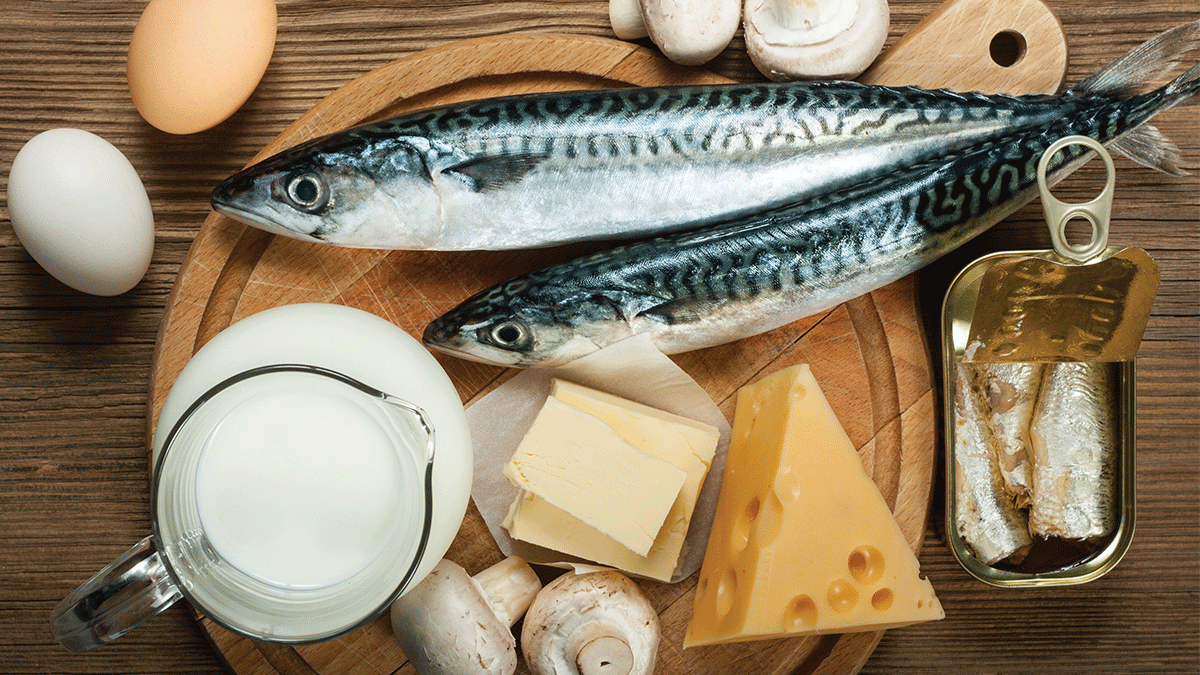The recent deluge of rain has filled our lakes and rivers, but has the sun-scarce streak of weather had an opposite influence on our bodies’ levels of vitamin D? Also known as the “sunshine vitamin,” because it’s produced via UV exposure on the skin, vitamin D is lacking in much of the U.S population.
“Vitamin D deficiency is now recognized as a pandemic,” said Dr. Michael Holick, one of the country’s leading vitamin D researchers, in a 2008 article published in The American Journal of Clinical Nutrition. More recently, a 2011 study published in the journal Nutrition Research found that 42 percent of all Americans were deficient. Symptoms of deficiency vary and are nonspecific, including muscle weakness, bone pain, fatigue, and difficulty thinking clearly. The best way to check for a deficiency is by getting a blood test.
Since vitamin D is involved in many biological processes throughout the body—some health professionals believe it should actually be classified as a hormone—deficiency can have vast and serious health impacts. Because it promotes calcium absorption in the gut and helps maintain adequate levels in the blood, vitamin D’s most commonly accepted health impact is on bone health and associated diseases like osteoporosis.
But emerging evidence is showing that it can affect cancer risk as well. According to an article published on the National Institute of Health’s website, “Strong biological and mechanistic bases indicate that vitamin D plays a role in the prevention of colon, prostate, and breast cancers.” It is also thought to be linked to cardiovascular disease because it’s involved in immune function and reducing inflammation. The article also states that vitamin D might play a role in both the treatment and prevention of conditions like type 1 and 2 diabetes, glucose intolerance, and high blood pressure.
New evidence published in February 2017 in the journal The BMJ showed that vitamin D supplementation protected against acute respiratory infections like colds and the flu. These two conditions are not only most common in winter and spring, when vitamin D levels are usually at their lowest, but are also a leading cause of doctor visits and days off work. Said the study’s lead author, “This major collaborative research effort has yielded the first definitive evidence that vitamin D really does protect against respiratory infections.” One explanation for this effect is that vitamin D increases levels of natural antibiotic-like substances in the lungs.
Vitamin D may also play a crucial role in psychological health and well-being through its impact on serotonin. Often thought of as the “feel good” neurotransmitter, it is implicated in long-term love and companionship as well as being acted on by drugs like antidepressants, LSD, MDMA, and psilocybin. A 2015 article published in the FASEB Journal proposed a direct link between not only vitamin D, but also marine-based omega-3 fatty acids, and serotonin synthesis, release, and function in the brain. The study estimated that around 70 percent of the U.S. population has inadequate levels of vitamin D and that optimizing intake “… may help prevent and modulate the severity of brain dysfunction.”
Being that vitamin D appears so crucial to both mental and physical well-being and that so many of us aren’t getting enough of it, what do we do? For one, don’t shun the sun. A little goes a long way: Vitamin D researchers generally recommend around 15 minutes of direct unprotected sunlight two to three times a week for sufficient vitamin D production. But conditions like cloud cover, shade, and pollution can reduce UV light by around 50 percent and it does not penetrate glass. And the more melanin that’s in the skin, the less UV light that gets through, meaning that darker-skinned people may need even more sun exposure in order to meet their needs. But it can also be obtained through the diet, although its natural sources are few, including fish liver oil, fatty fish like salmon and tuna, as well as cheese and egg yolks. The best vegan source of vitamin D is mushrooms, but many foods like breakfast cereals, orange juice, milk, and yogurt are fortified with it, and supplements are also widely available.














